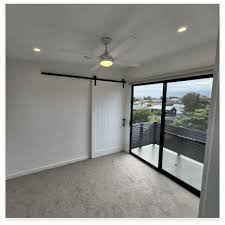about prevailing homes resilient design, community value, and future trends

about prevailing homes https://www.prevailinghomes.com.au/about-us/ The idea of prevailing homes captures a shift in how people think about housing: not as temporary shelters or mere investments, but as resilient, adaptable, and deeply connected parts of communities. Prevailing homes are designed to endure changing climates, shifting economic conditions, and evolving family needs while contributing positively to neighborhood character and environmental health. In this article we will examine the principles that underpin prevailing homes, practical design and construction strategies, social and economic benefits, and tips for homeowners and policymakers who want to encourage more resilient housing stock.
At the heart of prevailing homes is resilience. Resilience in housing means more than withstanding a single shock—it means flexibility in layout, robustness of materials, and systems that minimize the risk of failure during stress. For instance, elevated foundations, flood-resistant materials, and redundant mechanical systems can make dwellings more capable during extreme weather events. A prevailing home anticipates hazards and reduces dependency on fragile infrastructure, such as single-source energy or water supplies, by incorporating backup systems and passive design elements.
Sustainability and resource efficiency are essential components. Prevailing homes prioritize energy-efficient envelopes, passive solar orientation, high-performance windows, and proper insulation to reduce heating and cooling loads. Integrating renewable energy systems—solar panels, small-scale wind turbines, or geothermal heat pumps—can lower operating costs and reduce greenhouse gas emissions. Water-sensitive design, including rainwater harvesting, greywater reuse, and drought-tolerant landscaping, further improves a home’s ability to thrive with fewer external resources.
Design for adaptability ensures that homes remain useful over decades. Open-plan layouts that can be easily partitioned, accessible design to accommodate aging occupants, and provisions for home-based work or multi-generational living increase a property’s long-term relevance. Modular construction and standardized components allow easier updates and repairs. When a house is designed with future change in mind, it reduces the environmental and financial costs of demolition and rebuilding.
Material selection balances durability, embodied carbon, and maintenance needs. Low-maintenance exterior claddings, corrosion-resistant fasteners, and moisture-tolerant assemblies reduce lifecycle costs and deterioration. Where possible, choosing materials with lower embodied carbon—engineered timber, recycled content, and locally sourced stone or brick—helps lower a building’s total environmental footprint. Prevailing homes emphasize assemblies that can be inspected and repaired without invasive demolition.
Community integration is another defining trait. Prevailing homes support walkability, access to transit, and proximity to amenities, reducing reliance on cars and strengthening local economies. Streetscapes that prioritize pedestrians and green spaces create social cohesion and increase property values over time. Thoughtful infill development and sensitive renovations can increase housing supply without undermining neighborhood character, maintaining the social fabric that makes communities resilient.
Economic resilience is equally important. Prevailing homes are often cost-effective over their full lifecycle, even if initial construction costs are modestly higher due to higher-quality materials and systems. Lower utility bills, reduced repair frequency, and sustained market desirability translate to better returns and lower risk for homeowners and lenders. For policymakers, incentives such as tax credits, low-interest loans, or grants for resilience upgrades can accelerate adoption and distribute benefits equitably.

Health and well-being are central considerations. Good indoor air quality, natural light, thermal comfort, noise control, and safe finishes all contribute to occupant health. Prevailing homes incorporate ventilation strategies—mechanical ventilation with heat recovery or well-designed natural ventilation—to manage pollutants and moisture. Green building certifications and performance monitoring can help ensure that intended benefits are actually realized over time.
Technology plays a supportive role without overpowering simplicity. Smart controls can optimize energy use, detect faults, and enable predictive maintenance, but prevailing homes avoid overreliance on fragile proprietary systems. Instead, they favor interoperable, serviceable technologies with clear maintenance pathways. Digital tools—energy modeling, moisture monitoring, and lifecycle cost calculators—help designers and owners make informed decisions during planning and refurbishment.
Retrofitting existing housing stock is often the quickest path to a more resilient built environment. Energy-efficiency upgrades, improved insulation, roof reinforcement, flood-proofing measures, and conversion for multigenerational use can extend the life and utility of older homes. Policies that subsidize or mandate resilience upgrades in vulnerable areas can dramatically reduce future disaster recovery costs while improving current living conditions.
Case studies from diverse climates show that prevailing homes are achievable and context-specific. In coastal regions, resilient design focuses on elevation, corrosion-resistant materials, and quick-drying assemblies; in hot, dry climates, shading, thermal mass, and evaporative cooling are prioritized; in cold regions, airtight envelopes and high-efficiency heating dominate. Despite differences, the common thread is design that respects local conditions and leverages passive strategies before adding mechanical complexity.
Financing and regulation must align to promote prevailing homes. Building codes that incorporate resilience measures, insurance incentives for durable construction, and financial products tailored to lifecycle benefits can lower barriers to adoption. Engaging communities in planning efforts ensures that interventions meet local needs and values, preventing displacement and fostering ownership of outcomes.
For homeowners, practical steps include investing in a thorough site assessment, prioritizing interventions that offer the greatest resilience and energy benefits, and choosing contractors experienced in durable construction practices. For professionals and policymakers, the task is to codify best practices into accessible guidelines, provide fiscal support where necessary, and monitor outcomes to learn what works in different contexts.
Prevailing homes represent a convergence of durability, sustainability, and social responsibility. They are not a single style or technology but a way of designing and maintaining buildings that prioritize long-term value for people and the planet. As climate uncertainties and demographic shifts continue, the principles behind prevailing homes offer pragmatic strategies to ensure housing remains a source of stability, health, and community strength for generations to come.
